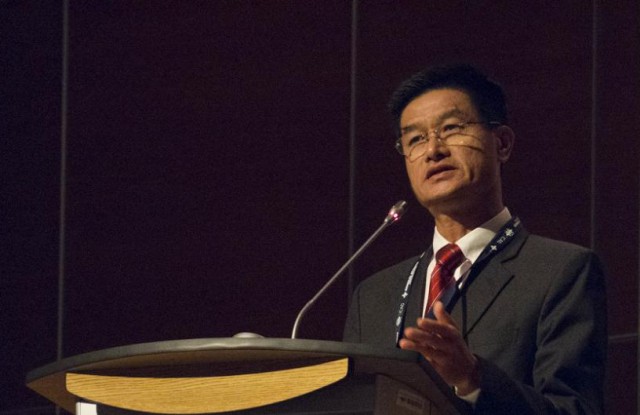Collaboration is the key to integrating unmanned aircraft into the airspace, keynote speakers from three countries said at the opening of the Second Global Remotely Piloted Aircraft Systems Symposium, held at the Montreal headquarters of ICAO, the International Civil Aviation Organization.
Alessandro Cardi, deputy director general of Italy’s ENAC aviation authority, said his country began its regulatory work with mid-size UAS, such as the Piaggio P1HH Hammerhead, unveiled a few years ago at the Paris Air Show.
For that aircraft, and others of a similar size such as the Falco UAS, Italy is using segregated airspace for such operations as humanitarian missions and commercial cargo delivery demonstrations.
Now, however, the country is grappling with much smaller UAS, which have mushroomed around the world as they have become cheaper and more available.
There is no way to tell how many are in use in Italy, he said, because registration of them is not required. They also fly in places traditionally off-limits to manned aviation, such as over crowds and near buildings, he said, which “poses a big challenge” for regulators.
Earl Lawrence, director of the U.S. Federal Aviation Administration’s relatively new UAS Integration Office, said the United States is also grappling with the pace of change.
The FAA “as a whole has shifted into high gear,” he said, mentioning the establishment of the Drone Advisory Committee and the Center of Excellence for drone research.
“At the FAA we have embraced a new way of thinking,” he said. “We know we cannot move at the speed of government while the rest of the industry moves at the speed of Silicon Valley.”
The DAC is the starting point, but the Center of Excellence is contributing research important to integration, such as a recent look at the potential effects of small UAS hitting people on the ground, and a forthcoming report, due in “coming weeks,” about what happens when a small UAS collides with a manned aircraft in mid-air.
Lawrence said the FAA will soon be automating part of the Part 107 approval process, moving beyond the current people-intensive system, and will start fielding that beginning early next year. It’s the “first concrete step in fielding a UTM [unmanned traffic management] system,” he said.
Tan Kah Han, senior director for safety regulation at the Civil Aviation Authority of Singapore, said his island nation has many of the same problems as the U.S. and Italy, coupled with its dense population and crowded airspace.
Singapore is experimenting with a variety of regulation schemes, including having dedicated flight corridors for last-mile drone delivery. Like the United States, Singapore is also investigating the impacts, literally, of things like crashing small drones.
Collaboration was the word of the day for the start of the conference, and several speakers highlighted its importance.
“Coordination is essential,” said Jan Pie, secretary general of the AeroSpace and Defense Industries Association of Europe. “No regulatory framework, no business. That’s it.”
In a later panel, AUVSI President and CEO Brian Wynne noted that unmanned systems of all types — air, ground and maritime — must work together as well as integrate with manned aviation.
He noted that now is the time to get it right, and said General Motors, in the 1970s, took the wrong approach to diesel integration, and as a result the market for diesel in the United States remains small compared to Europe.
“The execution is important. It’s critical,” he said. “If you don’t execute properly, the technology never takes off.”
Source: AUVSI

